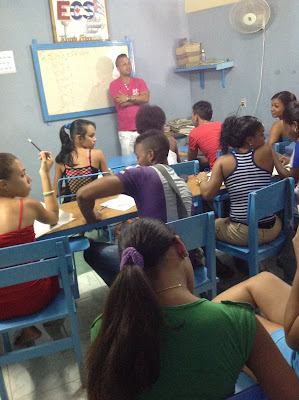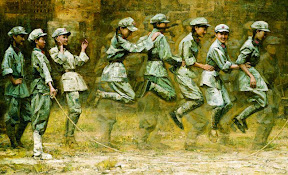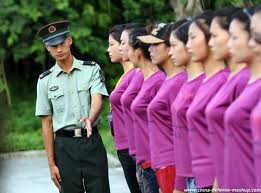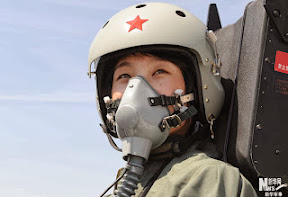Whew! Janet and I flew out of New York City just as the hurricane evacuation started. We had seats all ready booked, and aside from a few delays and waiting awhile in a long line up of jets out on the tarmac, we were home by Friday midnight only a few hours late! That was good luck!
It was a whirlwind week. I've been far too busy living it to write much. If you've been keeping track, I posted my daily itineraries in the News Flash box, and posted the photos in my slide show. There will be more to follow. It was quite a blast! An earthquake, a hurricane warning, and sunset's spent at the 9/11 site, watching everyone busy as bees fixing it up for next month's tenth anniversary. Then there was our art deco hotel and diner, the New Yorker, the Tic Toc and and and......
Despite being pretty tired Janet and I were up and out early this morning making our way downtown Toronto for Jack Layton's state funeral at Roy Thompson Hall. Actually we were at the unofficial peoples street party outside the hall, where it was quite an affair of a different kind. No tickets. No reservations either. Sometimes these are the best parties of all!
As the official guests arrived Janet and I were lined up front against the fence in the entrance way watching the ceremonies unfold. It was excellent to see so many guests of all political stripes. Jack's NDP's caucus arrived, many of them francophone. They came over to greet us all, a very nice touch. We watched Conservative Prime Minster Harper, looking very relaxed and at ease, greeting the Governor General, and other dignitaries. It was a very decent gesture to offer Jack the honour of a state funeral. He can now afford to be nice I suppose with his majority Conservative government safely esconed in Ottawa for the next four years and the leader of the opposition laid out in a casket. But this was no time for acrimony.
I counted two former Liberal Prime Minsters; Paul Martin and Jean Chretien. Provincial Liberal Premier Dalton McGuinty arrived by foot on his own, without an escort, as did Conservative Opposition Leader Tim Hudak, and provincial NDP Party leader Andrea Horwath. Ed Broadbent walked by too! We are still very small scale local and provincial here in Canada. It shows. This was a moment of reconciliation without the usual political rancor. True, Mayor Ford arrived with his entourage. He might need protection. I don't know. Ford's a pretty strange cookie. He makes jokes about ridding the city of "pinkos" and can be a pretty nasty piece of work, just ask the city workers and folks in subsidized housing. There were undercover cops spread throughout the crowd. I spotted quite a few. Still it was just a nice summer day, and overall a very laid back affair.
Jack Layton's hearse arrived escorted by bagpipers and a marching police brigade. It was a real tear jerker! Jack's wife NDP MP Olivia Chow lead the family on the route from city hall by foot. She looked very graceful, in a simple black dress, obviously quite sad but with head held high. Strident. Sort of like a Jacqueline Kennedy of the Canadian left in her darkest hour before the eyes of our nation. The crowd called out "We love you Olivia." She seemed to look over at us briefly and cock an ear but otherwise kept her good poise. She would receive many such cheers whenever she was seen outside in person or on the big screen throughout the day.
After the official motorcade had arrived there was an unofficial street marching band joined by hundreds if not thousands of cyclists, citizens and friends. Onlookers joined in. Labour flags waved in the breeze. Dancers in top hats and black suits with big red hearts pinned to their chest walked about on stilts miming our sense of despair and grief with the sweeping motions of their hands and their sad facial expressions. Very moving! At the head of the march were a crying husband and wife clown team. Every hard core lefty from Toronto, and perhaps even across the province must've been out in force marching down King Street to Roy Thompson Hall to say good bye to Jack.
An exaggeration? Perhaps, but it sure felt like it. It was informal and very Canadian; a big outside party for Jack. Lots of folk who just respected him, even if they disagreed with his politics mingled amongst an inclusive crowd of every political stripe and orientation. The gathering had a certain sense of decency which has been lacking for far too long in Canadian politics. It was a moment of unity. Everything just seemed to stop for an afternoon as everyone came together to say good bye to Jack. In the park out front of the hall we joined in a heart rendering version of Oh Canada. Then we watched the funeral on the huge big screen t.v., a shared experience of laughter and tears, and lots and lots of spontaneous outbursts of cheers for Jack and Olivia.
Prime Minister Harper looked very awkward on the outdoor screen when everybody rose for a standing ovation. Former Federal NDP Leader Steven Lewis' eloquent eulogy urged us all to follow Jack's example and fight for "social democracy". Of course Harper had to get up and clap too, Mr. Conservative or not. The crowd outside roared with laughter. It was too funny. The expression on his face was to die for. Even if it was just for now, he was letting the Canadian left have it's day in the sun, no doubt before the long political winter ahead.
After the funeral, Jack's motorcade and hearse sped off. Olivia got another standing ovation or two outside. Then the real fun began, for me anyway. It was meet and greet time! Janet and I wiggled behind the media stands to watch. A spry Jean Chretien leapt over the barriers, despite his considerable age, to meet with the press for the first time in ages. The former Prime Minister and Trudeaucrat was quite laid back and good humoured, a little odd at first perhaps, because we know he could be a real political scrapper. I called out from behind the cameras for him to please come over and speak to the people and he did, shaking hands and engaging in light banter with the crowd that gathered all around the stage. I decided to go for it and got up there with him, shook his hand and asked for a photo. He good naturedly agreed. I told him he was still badly needed in Ottawa, and he joked that he had been there for forty years, and that was enough. Still, I doubt Harper would be Prime Minster if Jean Chretien were still around today! Or maybe four years from now if Jack was still around. Now, we will just have to wait to see what happens for a bit.
All the police barriers soon came down and the crowds began to mingle with the dignitaries. It was very relaxed and informal. I wished Provincial NDP leader Andrea Horwath good luck in the upcoming election, and got a photo with her. I gave the Federal interim NDP leader best wishes and got a photo too. Then there was former Liberal Party leaders Stephan Dion and Michael Ignatieff. More photos again. I made my way over to greet my TSU political archnemisis [or maybe I am his, I'm not sure] Don Schmidt. I saw Mayorial candidate Andrew Gambione and his girlfriend and told him he shouldn't have dropped out of the race. He seemed ambivalent. I asked if we had seen the last of him and he said no. There was another photo. Same with City Councillor Adam Vaughan. I reminded him that we desperately need him now at city hall and urged him to kick Mayor Rob Ford's butt. He laughed and nodded. Only in Canada eh?
You may or may not know about my photo collection. Since I have been doing union political advisory work for over ten years now I often meet quite a few different public figures, usually in the political backrooms, or lobbying them at public events. Then there was the teacher protest strike in the late nineties when I ended up a lot in the news pictures even if I wasn't identified, usually not. Still we yakked a lot and Janet suggested I ask them for a photo. It's become sort of a game to see how many I can get, perhaps more so a political inside joke now; they can't very well be famous if they haven't had their photo with me. Crazy I know but a lot of fun and my photo album has become quite infamous. I've got them from all the political parties, even the ones I can't stand until it's gotten to the point where I'm unsure whether to call it a book of fame or shame. There's some pretty good stories I could tell too, but that will have to wait. Suffice to say I added quite a few more photos to my collection today, and will be sharing them on this blogsite, something I haven't been ever been able to do before. Ha ha.
Well, I'm off to Buffalo New York for a baseball game tomorrow with a group of my TSU union executive buddies, past and present, so I think I will end my blog here for now. Please stay tuned. I've still got some pretty good New York Diary stuff you might like, and of course this week we get the new union executive up and running, more on that later too.














